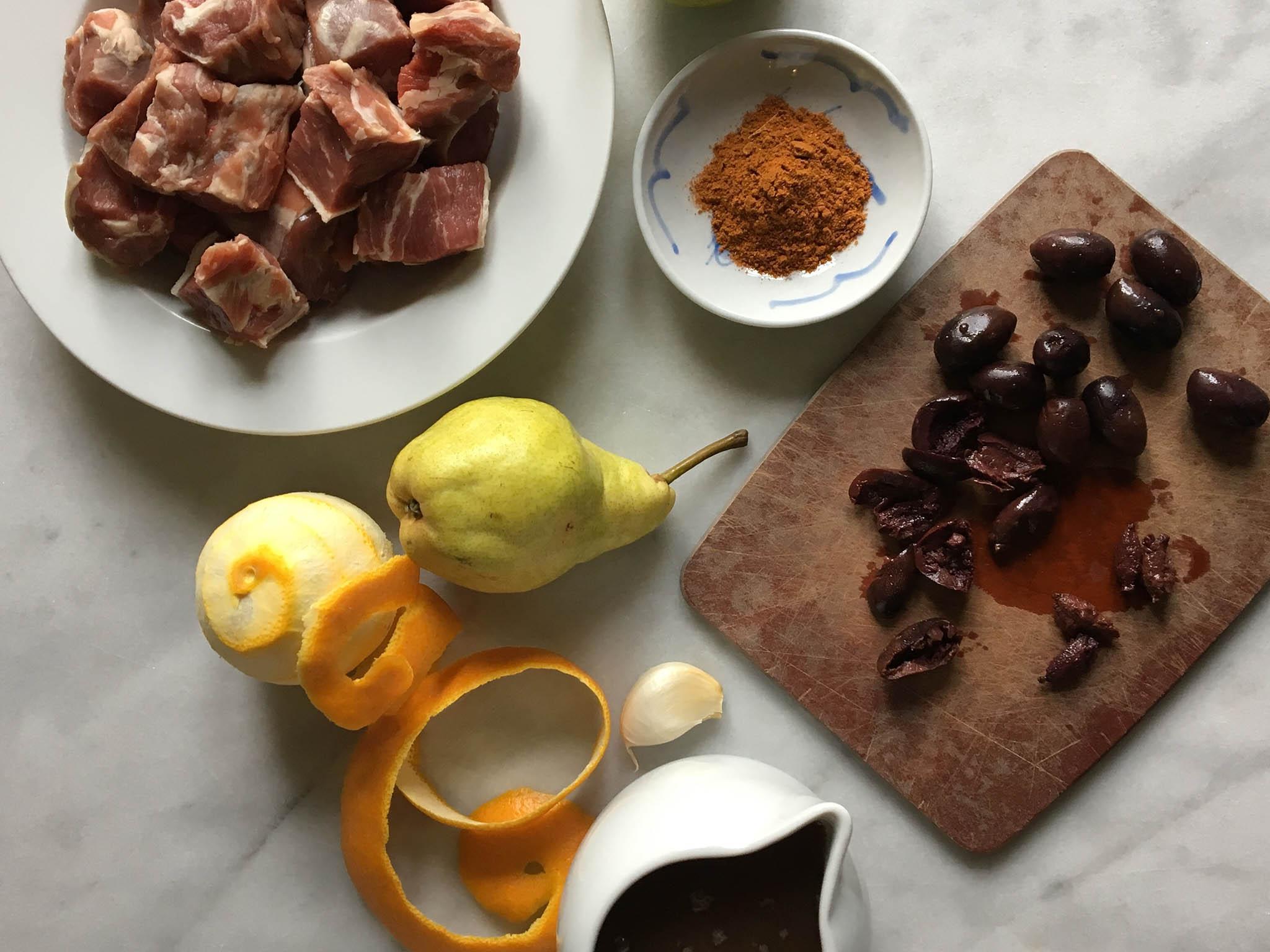How to make lamb with pears and black olives
Now is the time to indulge in brown food, says Julia Platt Leonard. Although they might not be winning any beauty contests, stews are to be welcomed with open arms


Brown food gets a bad rap. All that monochrome makes us nervous and itchy to toss on some chopped parsley or chives. But it shouldn’t.
Stews and slow-cooked meats just don’t need it. While they may not win any beauty contest, they deliver in taste – and now is the time to indulge in some brown food cooking.
This lamb dish is seasoned with ras el hanout – a North African spice blend. It gives the dish added warmth and depth.
I’ve used pears but you could use quince instead and dried apricots would be a nice touch.
Orange – peel and juice – lifts the dish and cuts through the richness of the lamb. All that’s needed is some bulgur wheat or rice – brown of course – and dinner is done.

Lamb with pears and black olives
Serves 3 to 4
Total time:
2 lamb neck fillets, about 550-625g total weight
2 tbsp olive oil
1 clove garlic, minced
2 tsp ras el hanout
400ml lamb stock
1 orange
60g olives with pits
2 pears
Preheat oven to 125C. Cut the lamb into large chunks and season liberally with salt and pepper. Heat the oil in an ovenproof casserole. Brown the lamb, ensuring it is seared on all sides. Do this in batches so the pan isn’t overcrowded. Place the lamb on a plate then sauté the garlic with the ras el hanout for a minute or two. Add the lamb back in along with the stock.
Peel the orange, creating one long strip. Juice it, then add the peel and juice to the pan. Bring to a simmer, then cover and place in the oven. Cook for around 2 hours or until the meat is tender.
Strain and degrease the cooking liquid. An easy way is to pour the liquid into a measuring jug and pop in the refrigerator. The grease will rise to the top and congeal. Scoop off the fat then return the liquid to the casserole along with the meat. Core the pear and slice into chunks. Pit the olives and tear or slice in half. Add both to the pan.
Bring to a simmer then place back in the oven until the pears are just cooked through – about 15 minutes, depending on how ripe they are.
Follow Julia @juliapleonard
Register for free to continue reading
Registration is a free and easy way to support our truly independent journalism
By registering, you will also enjoy access to The Independent app, exclusive newsletters, commenting, and virtual events with our leading journalists.
By clicking ‘Create my account’ you confirm that your data has been entered correctly and you have read and agree to our Terms of use, Cookie policy and Privacy policy.
This site is protected by reCAPTCHA and the Google Privacy policy and Terms of service apply.
Already have an account?
By clicking ‘Register’ you confirm that your data has been entered correctly and you have read and agree to our Terms of use, Cookie policy and Privacy policy.
This site is protected by reCAPTCHA and the Google Privacy policy and Terms of service apply.
By clicking ‘Register’ you confirm that your data has been entered correctly and you have read and agree to our Terms of use, Cookie policy and Privacy policy.
This site is protected by reCAPTCHA and the Google Privacy policy and Terms of service apply.
Join our commenting forum
Join thought-provoking conversations, follow other Independent readers and see their replies
0Comments